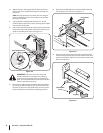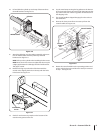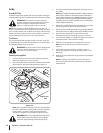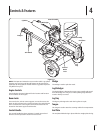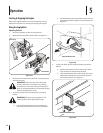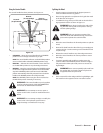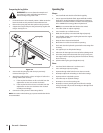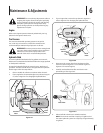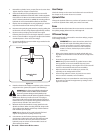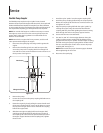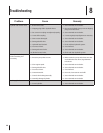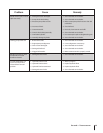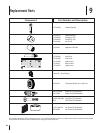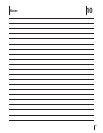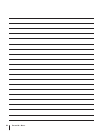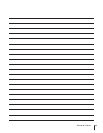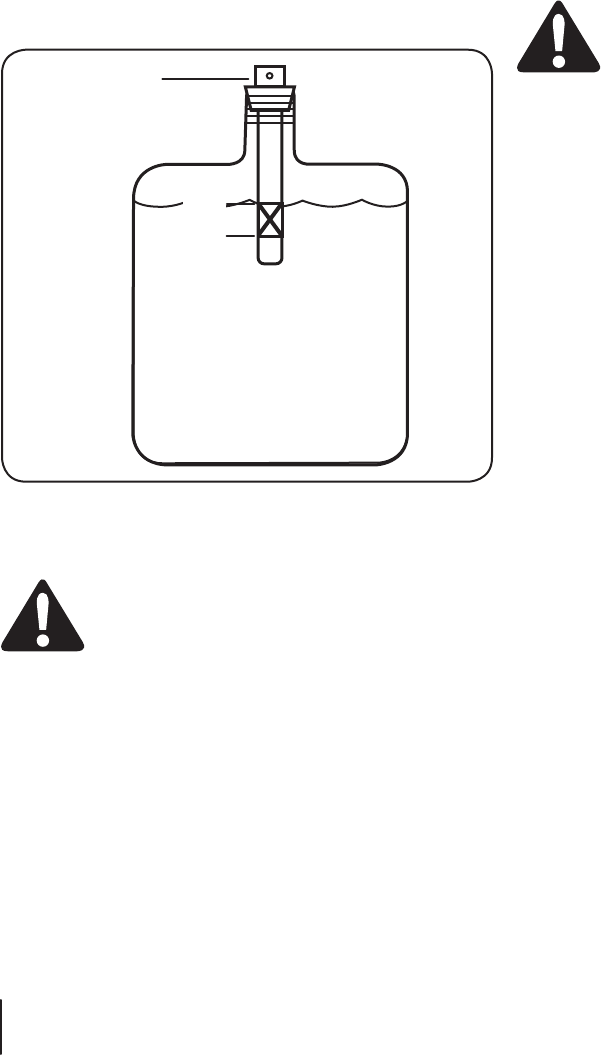
16 Section 6— Maintenance & adjuStMentS
Hose Clamps
Check the clamps on the return hose before each use and check
the clamps on the suction hose once a season.
Hydraulic Filter
Change the hydraulic filter every 50 hours of operation. Use only
a 10 micron hydraulic filter. Order part number 723-0405.
Beam
Lubricate both sides of the beam (where it comes into contact with
the splitting wedge), before each use, with engine oil.
Off-Season Storage
If the log splitter will not be used for more than 30 days, prepare
it for storage as follows:
WARNING! Never store the machine with fuel in
the fuel tank inside of building where fumes may
reach an open flame or spark, or where ignition
sources are present such as hot water and space
heaters, furnaces, clothes dryers, stoves, electric
motors, etc.
1. Refer to the Engine Operator’s manual packed with your
log splitter for information on the off-season storage of the
engine.
2. Clean the log splitter thoroughly.
NOTE: Using a pressure washer or garden house to clean
the log splitter is not recommended. They may cause
damage to the bearings or the engine. The use of water will
result in a shortened life and reduce serviceability.
3. Wipe the machine with an oiled rag to prevent rust,
especially on the wedge and the beam.
4. Store the log splitter in a clean, dry area. Do not store it
next to corrosive materials, such as fertilizer.
NOTE: If storing in an unventilated or metal storage shed,
be certain to rustproof the equipment by coating it with a
light oil or silicone.
7. Reinstall the cylinder, hoses, pumps, filter and suction hose.
Tighten the hose clamps to 50-60 in-lbs.
8. Check the fluid level using the dipstick. Do not overfill.
NOTE: Approved fluids include Shell Tellus® S2 M 32 Hydraulic
Fluid, Dexron® III / Mercon® automatic transmission fluid, Pro-
Select™ AW-32 Hydraulic Oil or 10WAW-ISO viscosity grade 32
hydraulic oil. It is recommended that fluids not be mixed.
9. Replace the vented dipstick securely, tightening it until the
top of the threads are flush with top of the pipe.
10. Disconnect the spark plug and prime the pump by pulling the
recoil starter as far as it will go. Repeat approximately 10 times.
11. Reconnect the spark plug wire and start the engine
following the instructions in the Engine Operator’s manual.
12. Use the control handle to engage the wedge to the farthest
extended position. Then retract the wedge.
13. If necessary Refill the reservoir within range marked on the
dipstick. See Figure 6-4.
Dipstick
MAX
MIN
Hydraulic Fluid
Only
Figure 6-4
14. Extend and retract the wedge 12 complete cycles to remove
trapped air in the system (the system is “self-bleeding”).
WARNING! Much of the original fluid has been drawn
into the cylinder and hoses. Make certain to refill the
reservoir to prevent damage to the hydraulic pump.
Failure to refill the tank will void the log splitter’s warranty.
NOTE: Some fluid may overflow from the vent plug as
the system builds heat and the fluid expands and seeks a
balanced level. Do not operate the log splitter without the
proper amount of fluid in the reservoir tank.
15. Maintain the fluid level within the range specified on the
dipstick at all times. When checking the fluid, always make
sure to tighten the dipstick until the top of the threads are
flush with the top of the pipe.
NOTE: Always dispose of any used hydraulic fluid and
engine oil at approved recycling centers only.
16. Contaminants in the fluid may damage the hydraulic
components. Flushing the reservoir tank and hoses with
kerosene whenever service is performed on the tank,
hydraulic pump or valve is recommended. Contact an
authorized service dealer.



